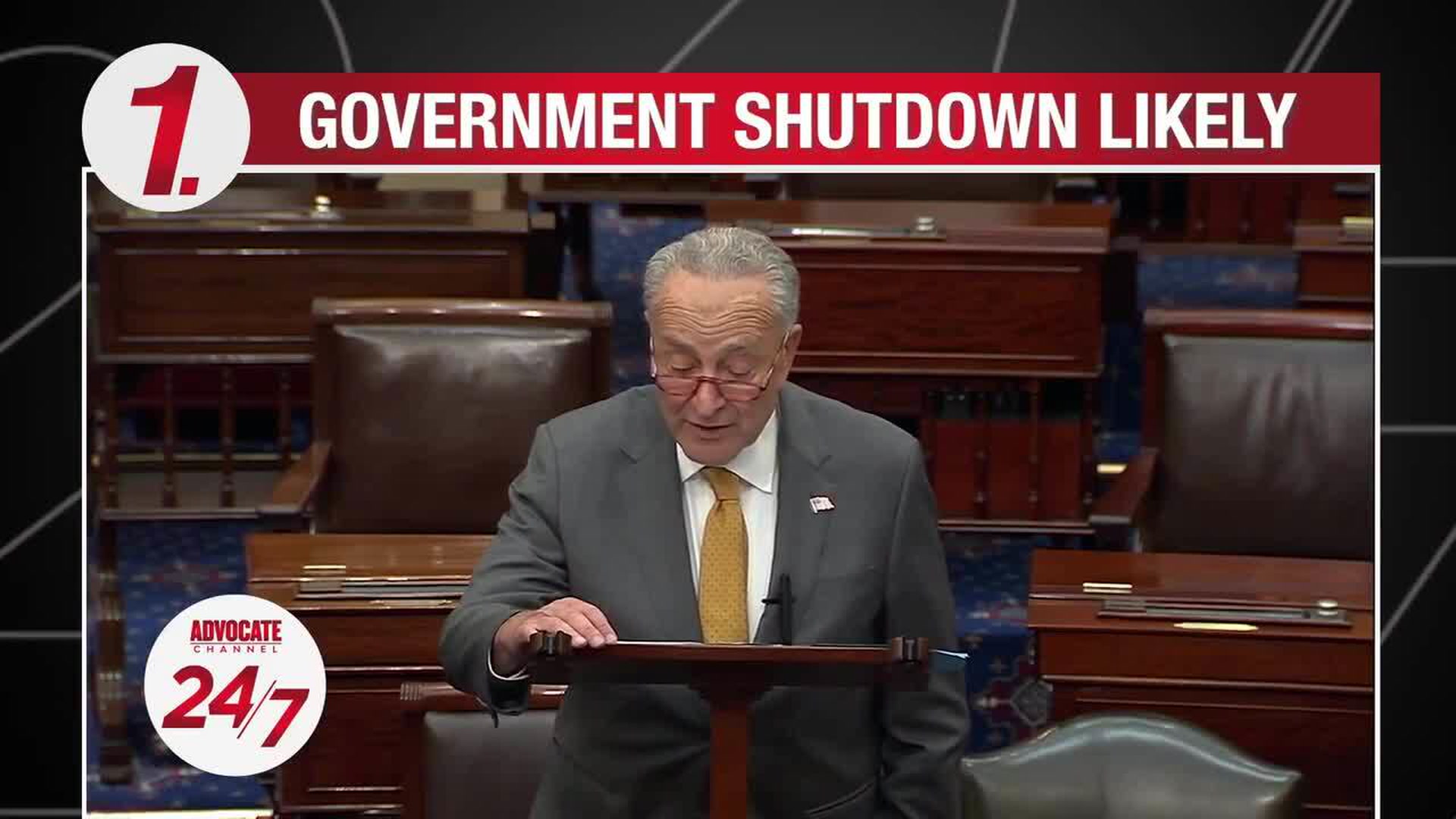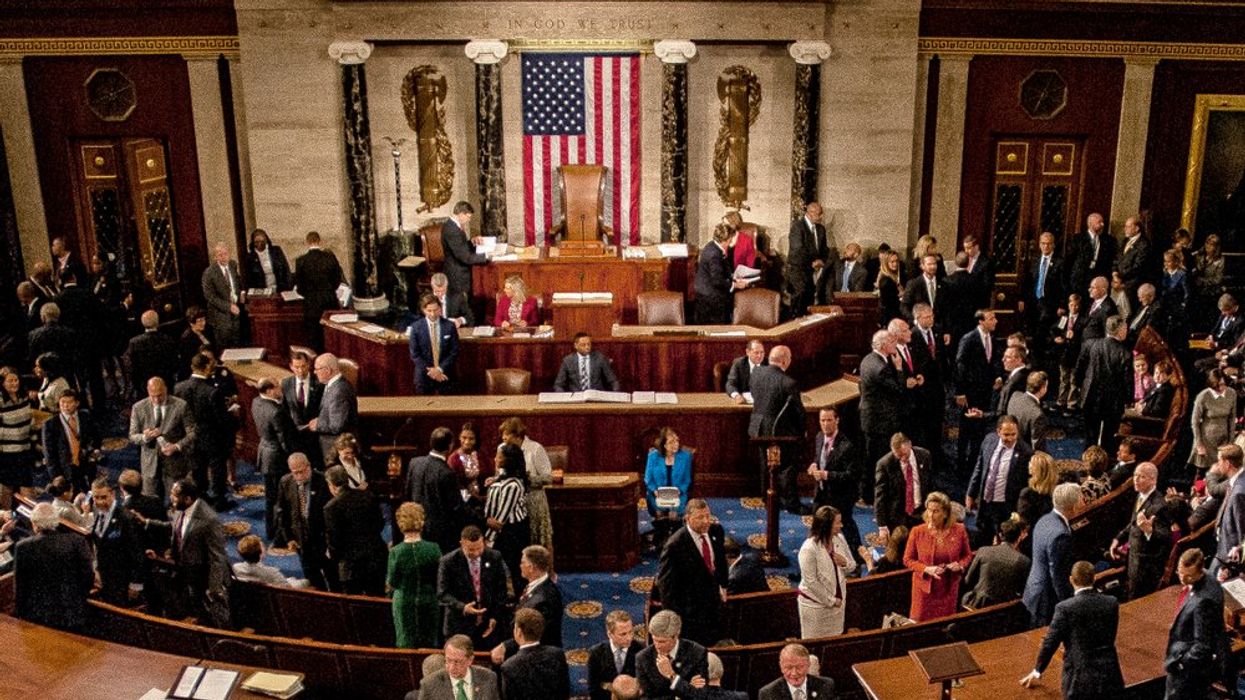
Video Source: Advocate Channel
(CNN) — The prospect of a US government shutdown grows more likely with each passing day as lawmakers have yet to reach a deal to extend funding past a critical deadline at the end of the month.
Congressional leaders on both sides of the aisle are hoping to pass a short-term funding extension to keep the lights on and avert a shutdown. But it’s not at all clear that plan will succeed amid deep divisions over spending between the two parties and policy disagreements over issues such as aid to Ukraine.
Here’s what to know if the government shuts down and what’s driving the current state of play:
How a government shutdown could be triggered
Government funding expires at the end of the day on Saturday, September 30 when the clock strikes midnight and it becomes October 1, which marks the start of the new fiscal year. (As shorthand, the deadline is commonly described as September 30 at midnight.)
If Congress fails to pass legislation to renew funding by that deadline, then the federal government will shut down at midnight. Since that would take place over the weekend, the full effects of a shutdown wouldn’t be seen until the start of the work week on Monday.
What could happen during a shutdown
In the event of a shutdown, many government operations would come to a halt, but some services deemed “essential” would continue.
Federal agencies have contingency plans that serve as a roadmap for what will continue and what will stop. The White House Office of Management and Budget will formally initiate the process of preparing for a shutdown on Friday, sending a communication to agencies reminding them to review and update shutdown plans.
Government operations and services that continue during a shutdown are activities deemed necessary to protect public safety and national security or considered critical for other reasons. Examples of services that have continued during past shutdowns include border protection, federal law enforcement, and air traffic control.
Federal employees whose work is deemed “non-essential” would be put on furlough, which means that they would not work and would not receive pay during the shutdown. Employees whose jobs are deemed “essential” would continue to work, but they too would not be paid during the shutdown.
Once a shutdown is over, federal employees who were required to work and those who were furloughed will receive backpay.
In the past, backpay for furloughed employees was not guaranteed, though Congress could and did act to ensure those workers were compensated for lost wages once a shutdown ended. Now, however, backpay for furloughed workers is automatically guaranteed as a result of legislation led by Sen. Ben Cardin, a Maryland Democrat, that was enacted in 2019. Employees deemed “essential” and required to work were already guaranteed backpay after a shutdown prior to the passage of that legislation.
And federal employees aren’t the only ones who can feel the effects of a shutdown.
During past shutdowns, national parks have become a major focal point of attention. Although National Park Service sites across the country have been closed during previous government shutdowns, many remained open but severely understaffed under the Trump administration during a shutdown in 2019. Some park sites operated for weeks without park service-provided visitor services such as restrooms, trash collection, facilities or road maintenance.
“If you’re a government worker, it’s highly disruptive – whether you’re not going to work or whether you are,” said Maya MacGuineas, president of the Committee for a Responsible Federal Budget, a nonpartisan, nonprofit organization. “If you’re somebody who wants to use one of the services that you can’t get access to … it’s highly disruptive. But for many people … all the things that they are expecting and used to seeing of government are still happening and the inconveniences and the kind of wasted time and wasted resources aren’t things that they see and feel directly.”
Why the US could be headed for a shutdown
There is a deep divide between the House and Senate right now over the effort to reach consensus on and pass full-year spending legislation as House conservative hardliners push for deep spending cuts and controversial policy add-ons that Democrats as well as some Republicans have rejected as too extreme.
With the funding deadline looming, top lawmakers from both parties hope to pass a short-term funding extension known on Capitol Hill as a continuing resolution or CR for short. These short-term measures are frequently used as a stopgap solution to avert a shutdown and buy more time to try to reach a broader full-year funding deal.
It’s not clear, however, whether there will be enough consensus to pass even a short-term funding bill out of both chambers before the end of the month as House conservatives rail against the possibility of a stopgap bill and have threatened to vote against one while demanding major policy concessions that have no chance of passing the Senate.
A fight over aid to Ukraine could also take center stage and further complicate efforts to pass a short-term bill.
Senate Democrats and Republicans strongly support additional aid to Ukraine, which could be included as part of a stopgap bill, but many House Republicans are reluctant to continue sending aid and do not want to see that attached to a short-term funding bill.
What has the White House said about a shutdown?
The White House issued a stark warning this week that a shutdown could threaten crucial federal programs.
In its warning, the White House estimated 10,000 children would lose access to Head Start programs across the country as the Department of Health and Human Services is prevented from awarding grants during a shutdown, while air traffic controllers and TSA officers would have to work without pay, threatening travel delays across the country. A shutdown would also delay food safety inspections under the Food and Drug Administration.
“These consequences are real and avoidable – but only if House Republicans stop playing political games with peoples’ lives and catering to the ideological demands of their most extreme, far-right members,” the White House said.
This story has been updated with additional developments.
The-CNN-Wire
™ & © 2023 Cable News Network, Inc., a Warner Bros. Discovery Company. All rights reserved.
- Republican States Will Feel the Brunt of Climate Change, Despite Denying It Exists ›
- Republicans Attacking Biden's Age Grapple With Mitch McConnell's Freezes ›
- Senate Ditches Dress Code, John Fetterman Dresses Down Detractors ›
- Republicans' Government Funding Proposal Is Dead on Arrival — And For Good Reason ›
- Monday's Top Stories: Government Shutdown, AI & Wildfires, Funding Haiti ›
- Thursday Top Stories: Government Shutdown, Trump, GOP Debate ›
- Wednesday's Top Stories: Government Shutdown, Great Barrier Reef ›

















































